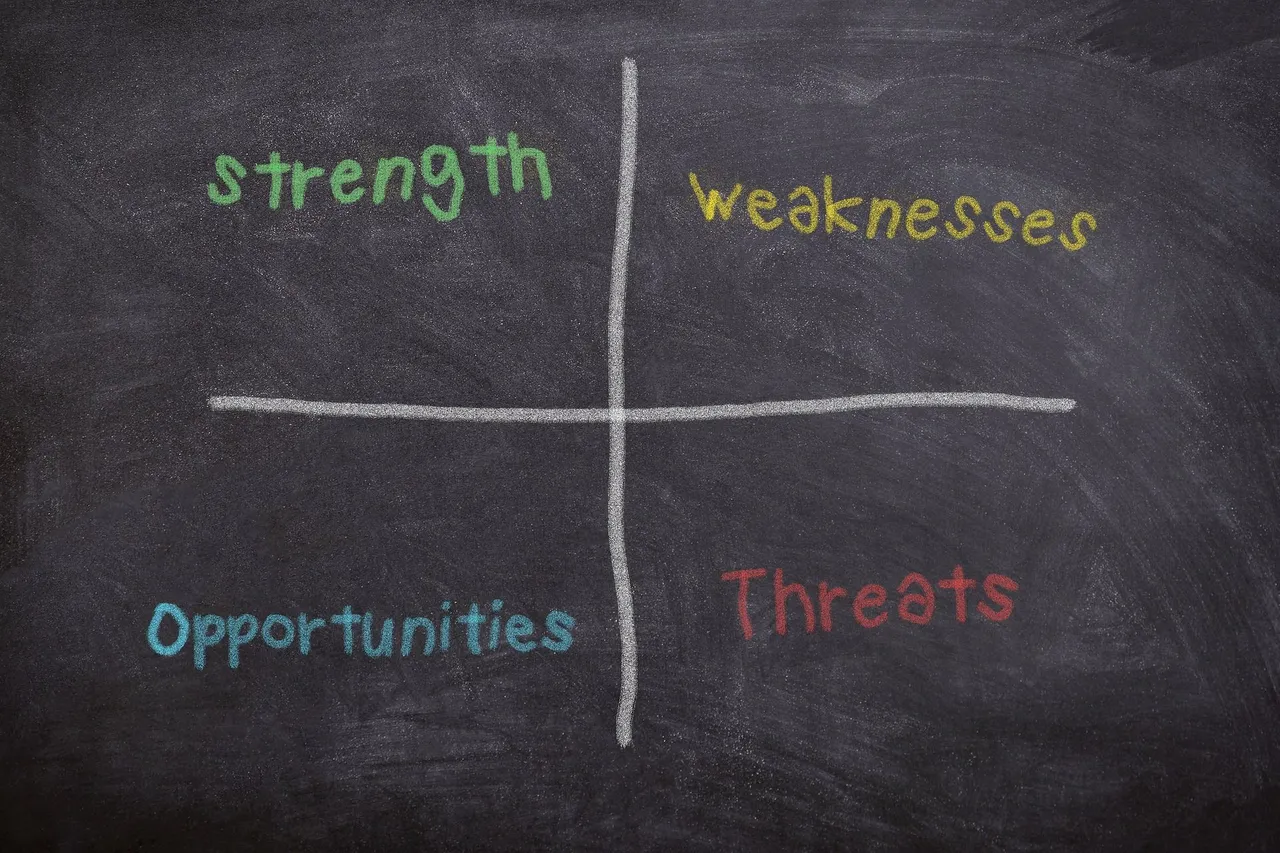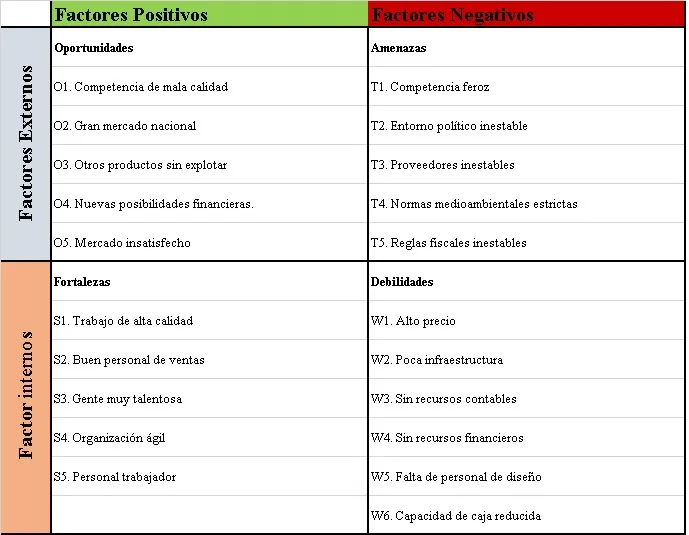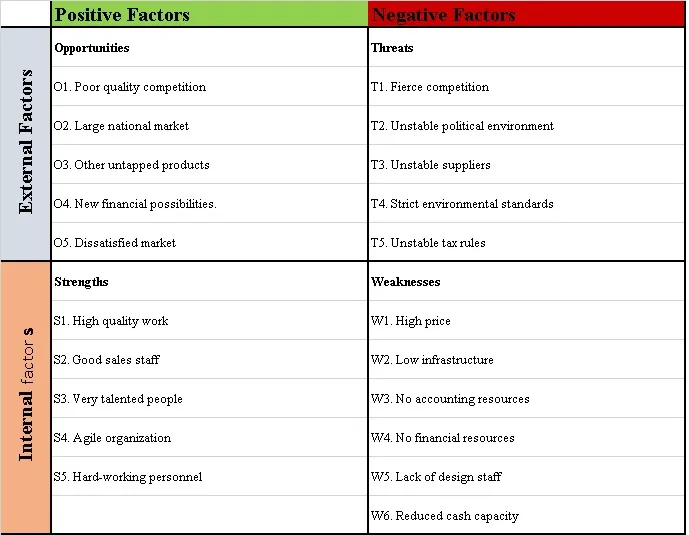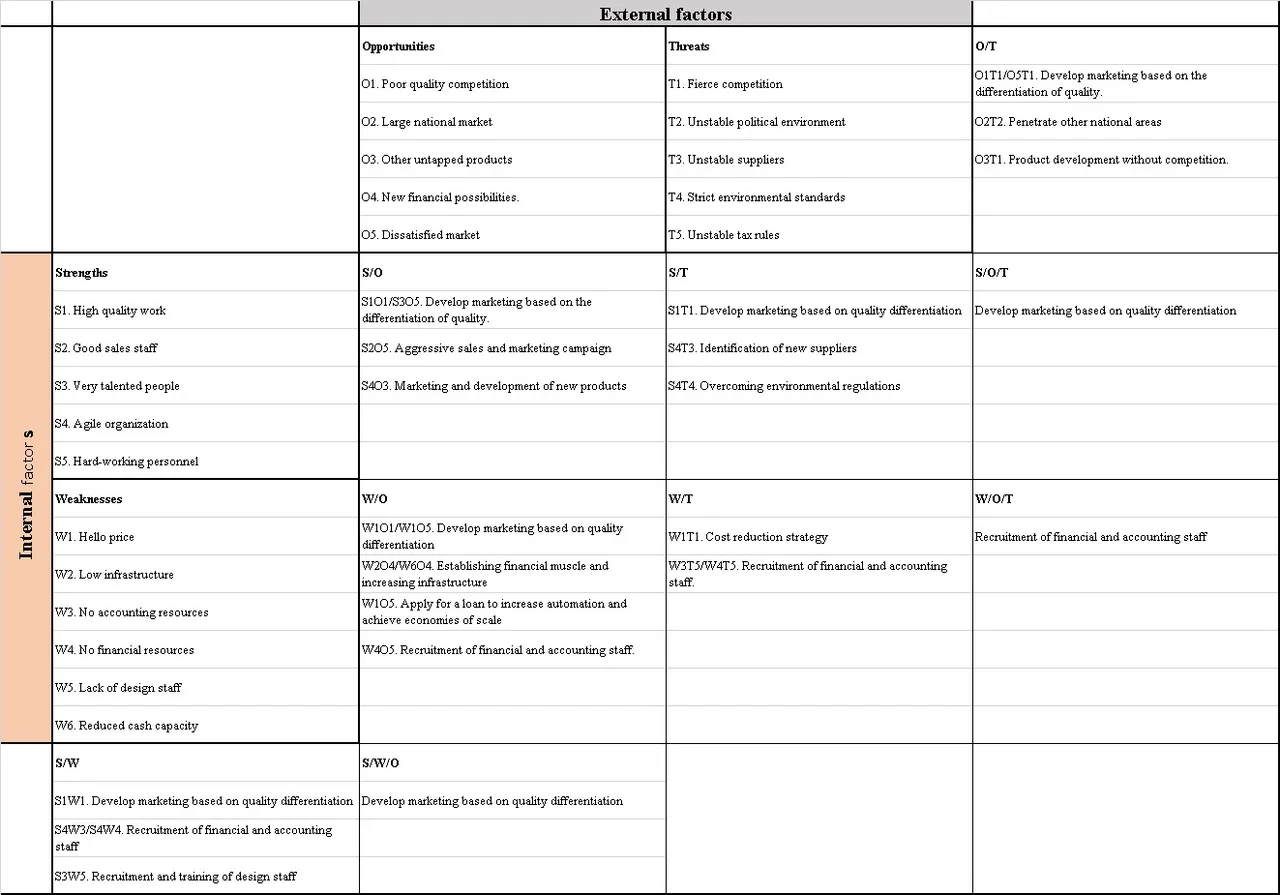Español
Hola a tod@s, espero se encuentren bien. En esta ocasión quiero escribir sobre la super famosa tabla FODA. Anteriormente nuestra compañera @chacald.dcymt explicó sobre la tabla FODA en su artículo 2 Herramientas para planificar tu emprendimiento, el cuál está muy bueno y te invito a leerlo. Con este artículo pretendo complementar un poco la información que ella nos presentó.
Estaré describiendo una técnica que he usado mucho en los procesos de entender la situación a la que se enfrenta el negocio. Lo he usado mucho con muy buenos resultados y paso por aquí a compartírsela.
Resumiendo un poco, la tabla FODA es un instrumente que permite complementar el análisis del entorno que describí en el artículo anterior de esta serie de artículos sobre la estrategia y el plan de negocios, el cual puedes leer aquí.
En el análisis FODA, uno trata de identificar de forma sistemática las Fortalezas, Oportunidades, Debilidades y Amenazas (FODA son las 4 iniciales de estas palabras), a las cuales se va a enfrentar el negocio. Esto por supuesto con la finalidad de posteriormente establecer acciones al respecto. Si buscas en internet conseguirás infinidad de páginas explicando la matriz FODA y como hacerlas. Una tabla FODA normal luce como la siguiente:
Las tablas que estoy presentando corresponden a una parte de un análisis real que hice para una empresa, tiene pocos factores, pero es con fines ilustrativos. Este tipo de tabla nos permite tener una idea concreta de nuestro entorno inmediato, desde luego, mientras más completo es mejor. Es ideal que los factores que coloquemos aquí sean el producto de la intervención de varios participantes, mientras mas cabezas aporten en esta tabla, mejor será el análisis. Una vez más, a medida que vayamos desarrollando el proceso nos daremos cuenta de cosas que antes no considerábamos, como siempre digo, es un proceso de descubrimiento.
Una vez que tenemos hecha esta parte de la tabla. Podemos escalar su utilidad. Esta es la parte menos difundida del uso de la tabla, pero que, sin embargo, recientemente ha ganado auge pues nos permite definir acciones directas, definir tácticas y estrategias. Lo que haremos será cruzar los factores de un cuadro con otro tratando de identificar acciones directas que se puedan derivar. A mí me gusta mucho por que arroja acciones directas que puedes tomar.
Por ejemplo, de la tabla anterior si tomamos el factor O1 “Competencia de mala Calidad” y lo cotejamos con los factores S1 y S3 “Trabajo de alta calidad” y “Gente muy talentosa” nos daremos cuenta de que tenemos fortalezas en función directa de una oportunidad. Así, por ejemplo, podemos definir una campaña publicitaria haciendo énfasis en nuestra calidad sobre la calidad de los competidores; ya habremos definido una estrategia a seguir, tendremos ya una acción a tomar. De la misma forma iremos cotejando todos los puntos tratando de identificar todas las posibles acciones a tomar y eso nos dará parte del plan de acción producto del análisis que hemos venido haciendo.
La tabla extendida puede quedar como la que presento a continuación y que forma parte del análisis que se hizo a la empresa:
A medida que vayamos definiendo las estrategias y tácticas a seguir puede ser que las repitamos, no pasa nada, sigamos con el proceso y al final cuando las vayamos a listar simplemente obviamos las tácticas repetidas. Espero que esta herramienta te pueda ser de utilidad, estamos a la orden para cualquier información adicional.
Gracias por leerme, saludos a tod@s y nos leemos la próxima semana!
Haz click y Sigueme!!!
English
Hello everybody, I hope you are well. This time I want to write about the super famous SWOT table. Previously our fellow @chacald.dcymt explained about the SWOT table in her article 2 Tools to plan your venture, which is very good and I invite you to read it. With this article I intend to complement a little the information that she presented to us.
I will be describing a technique that I have used a lot in the processes of understanding the situation that the business is facing. I have used it a lot with very good results, and I come here to share it.
To summarize a little, the SWOT table is an instrument that allows to complement the analysis of the environment that I described in the previous article of this series of articles on the strategy and the business plan, which you can read here.
In SWOT analysis, one tries to systematically identify the Strengths, Opportunities, Weaknesses and Threats (SWOT are the initial 4 of these words), which the business is going to face. This of course in order to subsequently establish actions in this regard. If you search the internet you will get countless pages explaining the SWOT matrix and how to make them. A normal SWOT table looks like the following:
The tables I am presenting correspond to a part of a real analysis I did for a company, it has few factors, but it is for illustrative purposes. This type of table allows us to have a concrete idea of our immediate environment, of course, the more complete it is the better. It is ideal that the factors that we place here are the product of the intervention of several participants, the more heads contributing to this table, the better the analysis will be. Again, as we perform the process we will realize things that we did not consider before, as I always say, is a process of discovery.
Once we have made this part of the table. We can scale its usefulness. This is the least widespread part of the use of the table, but that, however, has recently gained momentum because it allows us to define direct actions, define tactics and strategies. What we will do is cross the factors of one section with another trying to identify direct actions that can be derived. I like it a lot because it throws direct actions that you can take.
For example, from the table above if we take the O1 factor "Poor Quality Competence" and compare it with the factors S1 and S3 "High quality work" and "Very talented people" we will realize that we have strengths in direct function of an opportunity. Thus, for example, we can define an advertising campaign by emphasizing our quality over the quality of competitors; we will have already defined a strategy to follow, we will already have an action to take. In the same way we will be comparing all the points trying to identify all the possible actions to take and that will give us part of the action plan product of the analysis we have been doing.
The extended table can be like the one I present below and that is part of the analysis that was made to the company:
As we define the strategies and tactics to follow, it may be that we repeat them, nothing happens, we continue with the process and in the end when we go to list them, we simply ignore the repeated tactics. I hope this tool can be useful to you, we are at the order for any additional information.
Thanks for reading, greetings to everybody and we'll read next week!





